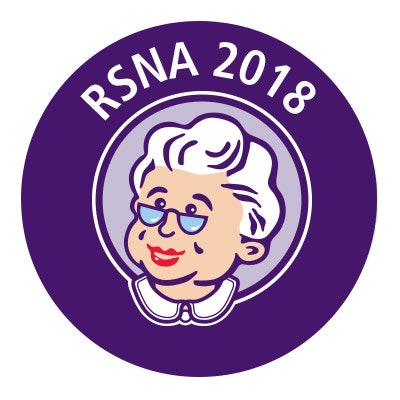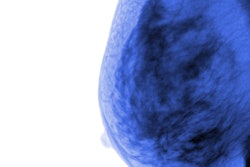
CHICAGO - Digital breast tomosynthesis (DBT) maintains its high performance over time when it comes to decreasing recalls and increasing the cancer detection rate, compared with 2D mammography alone, researchers from the University of Pennsylvania have found.
The study further confirms the technology's place in the breast cancer screening arsenal, according to results presented by Dr. Emily Conant at the RSNA meeting. She and colleagues analyzed DBT screening outcome data from the population level by year and the patient level by round over a six-year period.
"We found that at the population level, that is, everyone who comes for screening in a particular year, DBT increases the overall cancer detection rate and decreases the recall rate compared to 2D mammography, and that this outcome recurs over many years," she told AuntMinnie.com. "At the patient level, we found that successive rounds of tomosynthesis lowered recall rates, improving specificity."
Conant and colleagues included 71,535 consecutive DBT scans in 33,245 women performed between October 2011 and September 2017. The researchers analyzed DBT's performance for each year and for each of six rounds, tracking recall and cancer detection rates, as well as biopsy and false-negative rates (per 1,000 screens). They compared these outcomes with prior-year digital mammography screening and used cancer registry data to determine the interval cancer rate (cancer diagnoses less than a year after a negative mammogram) by year and screening round.
Overall, DBT's recall rate by year was lower than the baseline mammography (year 0) recall rate, at 7.9% versus 10.4%, and DBT's cancer detection rate per 1,000 exams was higher than that of 2D mammography. The interval cancer rate remained relatively similar to that of 2D mammography (1.1 per 1,000 exams).
| DBT population screening performance metrics by year | |||||||
| Year | |||||||
| 0 (2D mammo) | 1 | 2 | 3 | 4 | 5 | 6 | |
| Recall rate | 10.4% | 8.8% | 9% | 9.2% | 7.1% | 6.1% | 7.4% |
| Cancer detection rate (per 1,000 exams) | 4.8 | 5.5 | 5.8 | 6.5 | 6.3 | 5.1 | 5.5 |
| Biopsies (per 1,000 exams) | 1.9 | 2.2 | 1.9 | 2 | 1.5 | 1.3 | 1.5 |
| False negatives (per 1,000 exams) | 1.1 | 0.5 | 0.3 | 0.4 | 0.8 | 1 | -- |
| DBT patient screening performance metrics by round | ||||||
| Round | ||||||
| 1 | 2 | 3 | 4 | 5 | 6 | |
| Recall rate | 10.6% | 7% | 5.1% | 4.5% | 4.1% | 4.2% |
| Cancer detection rate (per 1,000 exams) | 6.4 | 5.5 | 6.1 | 4.4 | 4.2 | 3.1 |
| Biopsies (per 1,000 exams) | 2.5 | 1.4 | 1.4 | 1 | 0.8 | 1 |
| False negatives (per 1,000 exams) | 0.5 | 0.5 | 1.3 | 0.6 | 0.8 | -- |
"These findings show that at the population level, DBT has a lower overall recall rate and higher specificity, with a trend toward a higher overall cancer detection rate," Conant told AuntMinnie.com. "And at the patient level, despite a diminishing cancer detection rate over time -- although it's still at benchmark levels -- it decreases recall and biopsy rates."
Advanced cancers
Finally, Conant and colleagues looked at the biology of the cancers identified. They used Tomosynthesis Mammographic Imaging Screening Trial (TMIST) criteria for "advanced cancers," meaning those with at least one of the following characteristics: node-positive or metastatic; human epidermal growth factor receptor 2 (HER2)-positive and 1 cm or larger; estrogen receptor (ER)-negative and progesterone receptor (PR)-negative and 1 cm or larger; or ER- or PR-positive and 2 cm or larger.
DBT identified more advanced cancers at the patient round level than digital mammography alone did, and the cancers it missed were less advanced, Conant told session attendees.
"Independent of screening round, DBT found more advanced cancers compared to digital mammography, and there were less advanced cancers in the false-negative group," she said.
The researchers plan to collaborate with TMIST in the hope that the study data will help power the trial's analysis of the performance of DBT versus 2D mammography.
"Further long-term DBT data may help guide new, personalized screening algorithms by age, density, and risk," they concluded.



















